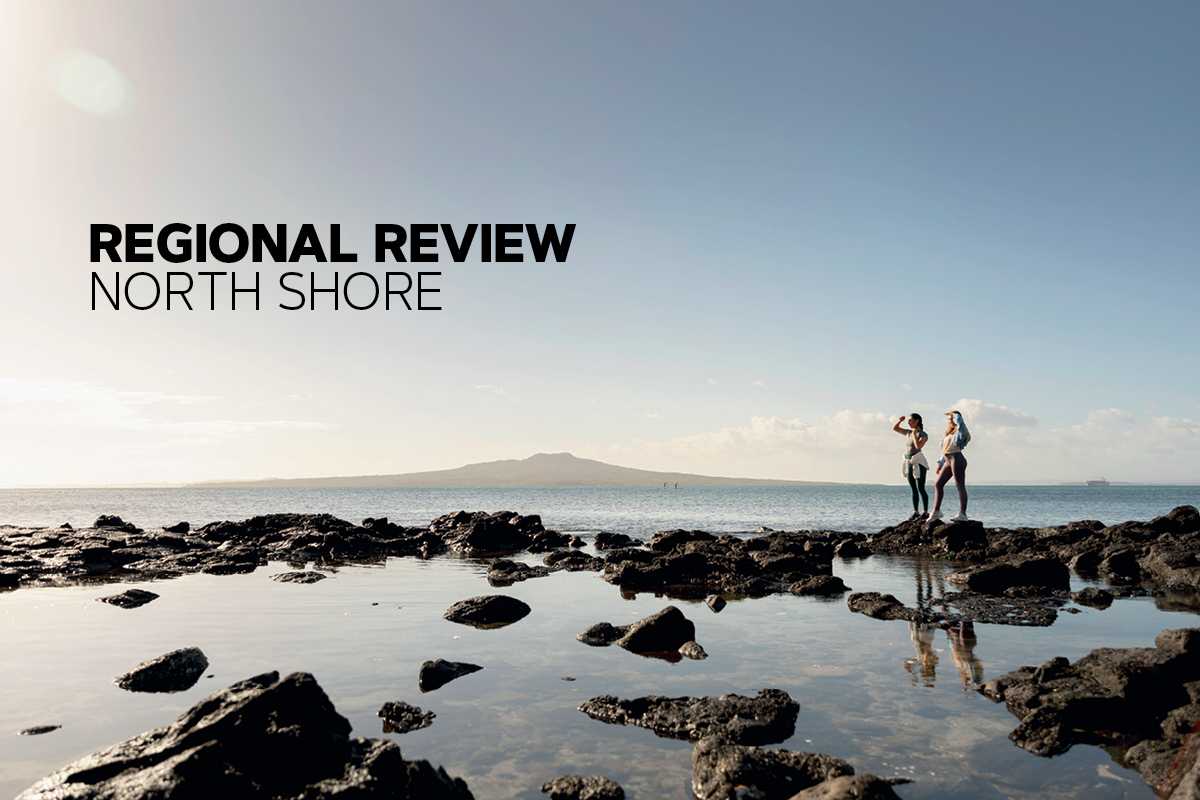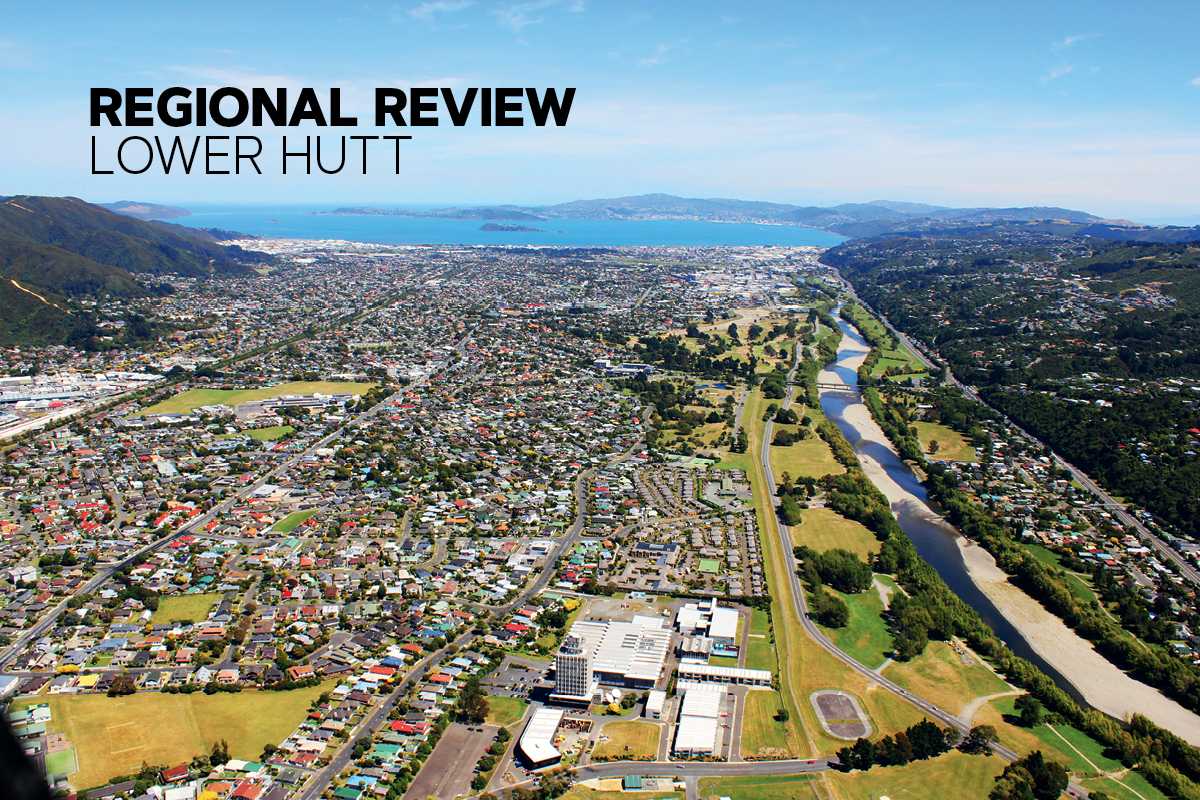
Lower Hutt Flying High
Lower Hutt is no longer a cheap option, yet it still represents good investor opportunities, writes Joanna Jefferies.
1 April 2020
If you were making a checklist for the perfect spot to buy a rental, Lower Hutt would tick a lot of boxes.
There’s a shortage of properties; rising rents; quality tenants who tend to stay for a long time; and strong demand for rentals, helped by a bustling CBD and busy major hospital. Located just a short drive from Wellington Central, Lower Hutt is an ideal choice for commuting professionals, young families and anyone who likes being handy to city amenities without paying full city prices.
The only box Lower Hutt might leave unticked is the one about low prices; what was once a cheap alternative to Wellington is now becoming a firstchoice location in its own right. The riverside location, the natural beauty of the local trails, and the excellent food, art and retail make Lower Hutt an increasingly appealing lifestyle choice.
Put all that so close to a wide range of employment opportunities – south, north and nearby – and you have a lifestyle choice that’s appealing to an increasing number of Kiwis and new migrants.
As a result, everything is going up, from the population, to the rent, to the house prices. Investors now need to reach much further into their pockets than they might once have expected to secure a property here.
“One of the attractions of Lower Hutt used to be that it was so much cheaper than central Wellington. But that has started to change, with the price gap narrowing. More people live here and don’t leave for work now. It’s more of a self-sufficient city in its own right these days,” says property coach Steve Goodey, who owns 30 properties in the wider Wellington region and 10 in Lower Hutt.
“For an investor, it is has got tough to buy a decent house, with the median price at around $650,000. Price-wise, Lower Hutt is having its day in the sun. It’s probably best to look at it as a capital market rather than a cashflow market.”

‘It’s probably best to look at Lower Hutt as a capital market rather than a cashflow market’ STEVE GOODEY
Infrastructure Is Encouraging, But More Is Needed
For a long time Lower Hutt seemed to have been overlooked in terms of major infrastructure, but with its popularity growing that’s started to change.
“There didn’t use to be anything bubbling along in this area. But the earthquake has forced the rebuild of a few things,” says Goodey, naming the town hall, gym, mall and cinema rebuilds, plus a new hotel complex. “
Transmission Gully will impact; it will change the Wellington region massively. We are starting to see some of the impact from that already. If they connect it the way they have planned to, it will open up the whole of the Hutt Valley.”
The train between Trentham and Upper Hutt is also being double tracked so trains can travel in both directions at once, which will mean more frequent and reliable train services to Wellington.

Helen Vance, Quinovic business development manager, is also keeping an eye on the Melling transport improvements project. She says investors looking to buy should consider Maungaraki, because it’s being connected to the motorway, which is pushing up prices and demand.
Despite all this activity, there’s not yet enough being done to support local growth, says Shawn Manders, local investor and WPIA board member: “We need more infrastructure put in place. There needs to be more work on the road-cycle links and links to SH2. The Lower Hutt CBD needs more life injected into it. But I can’t see that happening in the short-term. There is the Queensgate [shopping mall] rebuild underway and that could be a help.”
Limited Space Plus High Demand Means Price And Rent Rises
Housing construction has not kept pace with the influx of people to the area, bolstered not only by those internal relocations but also by immigration.
Housing developments have been limited by zoning rules and other limitations, including a lack of easily-developed flat land. Overall, stock is limited and both prospective buyers and tenants struggle to find listings. This is one of the reasons for the longer-than-average tenure for renters in Lower Hutt and it’s also a major
factor in the increasing house prices.
‘It feels like everything in Lower Hutt has gone up by $100,000 in the last few months’ JOHN ROSS
“I don’t remember a time when there has been a surplus of properties in Lower Hutt. Maybe the odd year here and there – 1990, 2008. But the rest of the time there’s been a shortage of housing,” says John Ross, an agent at Professionals Redcoats with over four decades’ experience in the area. He believes farmland bordering the city could be better utilised for housing: “Lower Hutt is in need of some bold urban development planning. But it will depend on how hard central government push local government on that.”
Prices were at a record high in February of $660,000, up 10.9% on a year earlier; sales were also up 24.6% year-on-year. Properties in the low to mid-market price bracket sell within weeks, often under multi-offer situations. It’s been four years of double-digit price growth and rents, too, have been rising rapidly: as high as $550 a week since August. Vance says Hutt Central median asking rents have risen 31.6% over the past three years. A lot of the heat is likely to come out of the market due to coronavirus’s widespread impact, but the fundamentals in Lower Hutt remain strong, particularly the continuing population growth.
A study commissioned by Hutt City Council, released in March 2020, predicted the number of households in Lower Hutt would increase 9% by 2038, adding 3,530 more households to the area. The strongest growth is predicted to be among one-person and couple-only households, in part due to the ageing population. The study also forecast an additional 2,910 houses would be required to accommodate the extra people over the next three decades.
This presents significant challenges for the council. Having been stable for so long, Lower Hutt is like a house that’s had a lot of deferred maintenance and now there’s a huge amount of work ahead to get it up to the required standard.
“After 30 years of no growth, Lower Hutt’s population is now around 108,000. There’s lots of immigration and that adds to demand,” says Ross. “It feels like everything in Lower Hutt has gone up by $100,000 in the last few months.”



Strategies For Investing In This High-Demand, Low-Supply Market
Traditionally, Lower Hutt was a place where investors bought cheaply, enjoyed positive cashflow and modest capital gains. That equation has been turned on its head as the area has changed.
While trading was still popular a few years ago, rising prices mean it rarely stacks up in 2020, says Manders. He believes new builds and development offer the best opportunities for gains at the moment: “Adding new properties on to existing land, if you have the cash flow to do that, is good from an investment perspective. You can get quite a few new properties on to existing land. If you have the cashflow to do that it is a good one from an investment perspective.
There’s instant capital gain and you can do rentals too. The yields are negligible in the beginning but there’s capital gain and they are low maintenance.”
Ross says investors are definitely more interested in buying new builds than they’ve ever been with the “ongoing drip-feed of changes” being made to rental standards and requirements. He has seen some large landlords selling up rather than having to deal with the new reforms, and the properties have quickly been snapped up by other investors and owner-occupiers. New planning rules are creating possibilities, Ross adds tiny homes are something he believes have serious potential for creative investors.
However, more traditional strategies will work if you hunt them out or work hard to create them.
“My strategy has been to invest in high growth areas with premium tenants – being close to transport, to the city and local cafes is critical,” say


John Butt, a born-and-bred Lower Hutt local who is also a long-time investor in the area. He has recently reduced his portfolio to prepare for retirement, and currently owns two residential units that have performed well, with their values more than doubling and returning 12% gross on their purchase prices (4% gross on current values). He also owns a commercial property with a 10%-plus return. Butt says investing in Lower Hutt has been “positive and successful; we retired on the proceeds”.
The Spots To Watch
Petone is Butt’s top suburb choice right now, and he’s in good company. Goodey agrees that Petone is a top choice, and Vance describes Petone and Alicetown as “hot areas that are just getting hotter; always stellar performers”.
“Avalon is another area that will particularly interest investors. An up-andcoming area that is still affordable, over the past three years the median asking rent in Avalon has risen by 24.6%,” adds Vance.
In Stokes Valley and Wainuiomata it’s still possible to buy below half a million, with some infill development underway and some potential for capital growth, says Manders. But he prefers the central fringe areas: “Suburbs like Waiwhetu, Fairfield and Naenae, which are relatively affordable suburbs near to the train line there’s a few of them. It’s easier to find tenants which is always good. Go back to the fundamentals.
Look for the right sort of property for the strategy that you want to pursue and make sure that the numbers work.”


